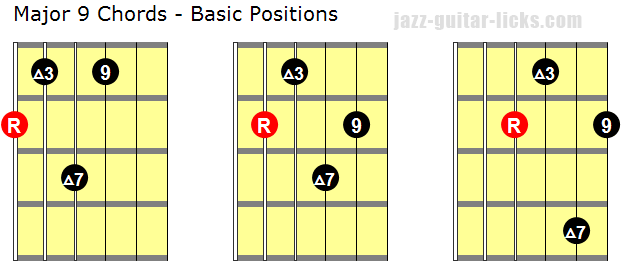


Half-tone/tone (8 note scale), 1/2 step/whole step Diminished scale, Octatonic scale.Īny chord with a major third can have the third replaced by a major second or perfect fourth to form a suspended chord. The dominant seventh is sometimes just called the "seventh", even though it contains a minor seventh and not a major seventh. Note numbers in parentheses are optional: V - vii°: (vii° the little circle at the end means diminished) these chords can also be notated as G Major to Bminb5 (Minor flat 5 chords are the jazz notation for diminished).In C this Progression would be C Maj, F Maj, D minor, G major, C Maj, A minor, D minor, G Major, and back home to C Maj. You may move across the degrees and interchange the chords or can skip degrees entirely if so desired but here is a nice chord progression: Example- I, IV, ii, V, I, vi, ii, V, I) A good key to practice it in would be C because there are no sharps or flats to remember but you can do it in ANY major key. This is because the Major 5th makes you feel like you are going home to your happy home the I chord but instead you land on a minor chord which will sound sad but still complete. If you end your phrase or piece using V to a vi chord this is also (see above) called a deceptive cadence (or ending. The I chord is your musical home but you may go other places during your journey but you usually drive back home using the V (the car of the key) to get there. All dominant chords must contain a seventh, though it is possible to leave out the 5th from extended chords such as 13th chords. A G9, G11,or G13 all can be used as a dominant chord. If they are not dominant they will say something like G Maj7 which has a dreamy feel but in the key of C - G is dominant so its notated G7. Dominant chords contain a major triad with a minor 7th. All chords that have a number immediately after the letter are actually dominant chords with added notes. You may think of the I of a scale (also called the tonic) as home and the V (also known as the dominant chord) as the car that drives you back home. Moving from a V to vi chord is called a deceptive cadence because traditional western music is usually a battle between the Major V and Major I. A good example of a song that uses an amen cadence is ”Let it be” by the Beatles (Amen means let it be!). At the end of a hymn people would sing Amen from the IV to I. There are, of course exceptions including cadencing using the IV to I which is called the Amen cadence because of its use in older church hymns. You can move down the tree but you may not retrograde (go backwards) until reaching the bottom. This is one of the chord trees that will aid in the writing and analysis of music. If you see a C7#9 it means you raise the 9th a half step. You also need to know that you can raise and lower notes if desired in the chords you’re writing. Since every Major scale has the same formula this can make transposition fairly easy because if you recognize a piece of music is playing a I chord or any other degree of chord from your original key to transpose all you would need to play is the same chord degree in the new key you desire. You can keep extending chords making 6th, 7th, 9th, 11th, 13th chords, and sus4 chords. G is then 5 steps away from the root (C) making it the 5th. The 1st note (in this case C) is called the root, after that you count steps away, starting with C - making the 3rd E. Since triad chords are built by using every other note from the one you begin on - a C Major chord would be CEG. For example in the key of C the scale would be CDEFGABC. The scale numbers would look like this I ii iii IV V (the 5th should have lines above to show its Major) vi vii(o) I. The remaining chords are minor with the exception of the 7th which is diminished. The I, IV, and V are the only major chords in a traditional major scale. The formula to make a Major scale is the same for every single Major key. In western music chords are traditionally built by using every other note beginning on each scale degree - giving you a choice of 7 diatonic chords in a Major scale. Upper case represents a Major chord, lower case are minor chords, and lower case with a little circle in the upper righthand corner of the Roman numeral is diminished. The scale degrees are numbered with Roman numerals so that you can use upper and lower case letters. Each scale degree represents a potential chord. Each note in the scale is called a scale degree. A Major scale has 7 different notes and then ends back on 1, making a total of 8 notes.


 0 kommentar(er)
0 kommentar(er)
